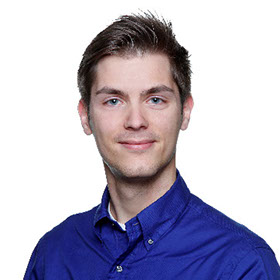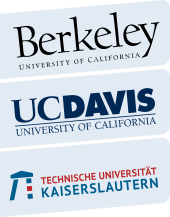

RESEARCH PROGRAM
Title: Algorithmic Curvature Theories in Image Processing
Name: Markus Kronenberger
(former student)
Project description:
Starting situation
The virtual modeling of processes – on its lowest level – requires itself sophisticated models of the processed materials. For generating them, specimens of real materials have to be investigated. Usually, techniques like X-ray micro computed tomography (µCT) are used, as they allow for a non-destructive analysis. The resulting three-dimensional (3D) images can be analyzed using image processing algorithms to obtain geometric properties. These are essential as they serve as basis for the model fitting. A necessary prerequisite are accurate and robust algorithms for analyzing the images of the materials’ structure.
Approach
Differential characteristics, like e.g. mean and Gaussian curvature, are important properties for analyzing structures in 3D-images. In our preliminary work (Gaussian curvature using fundamental forms for binary voxel data), we introduced a method for estimating the so called fundamental forms, from which several of these characteristics can be derived.
In this project, we will expand on the previous work by using the developed method to analyze fiber-reinforced composites in more detail. Such materials are combinations of at least two materials in order to improve the properties of the resulting material. One material serves as reinforcement, in this case the fibers, and is primarily responsible for the mechanical properties of the resulting material. Therefore, its quantitative analysis is of importance. Several characteristics like fiber density and fiber orientation are already accessible using algorithms from literature. However, other important properties like fiber length distribution or fiber-fiber contacts are not yet sufficiently measurable. To overcome this shortcoming we will use differential characteristics to develop new methods for estimating them.
Expected Results
As a result of this project, we expect to obtain new methods for estimating not yet accessible properties of composite materials. These will allow improving models of the materials itself and therefore a more accurate virtual modeling of processes that involve them.

Fig.: Visualization of a glass fiber reinforced composite (FRC) sample.
Kindly provided by Harting. 450 x 960 x 1000 @ 1.9 µm / pixel.

